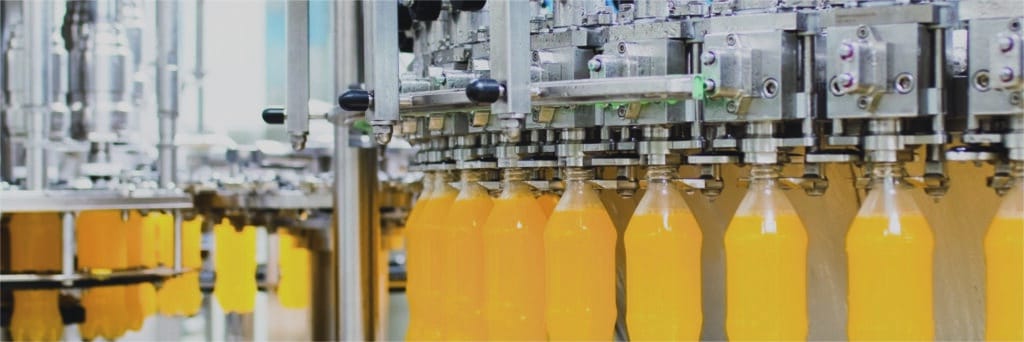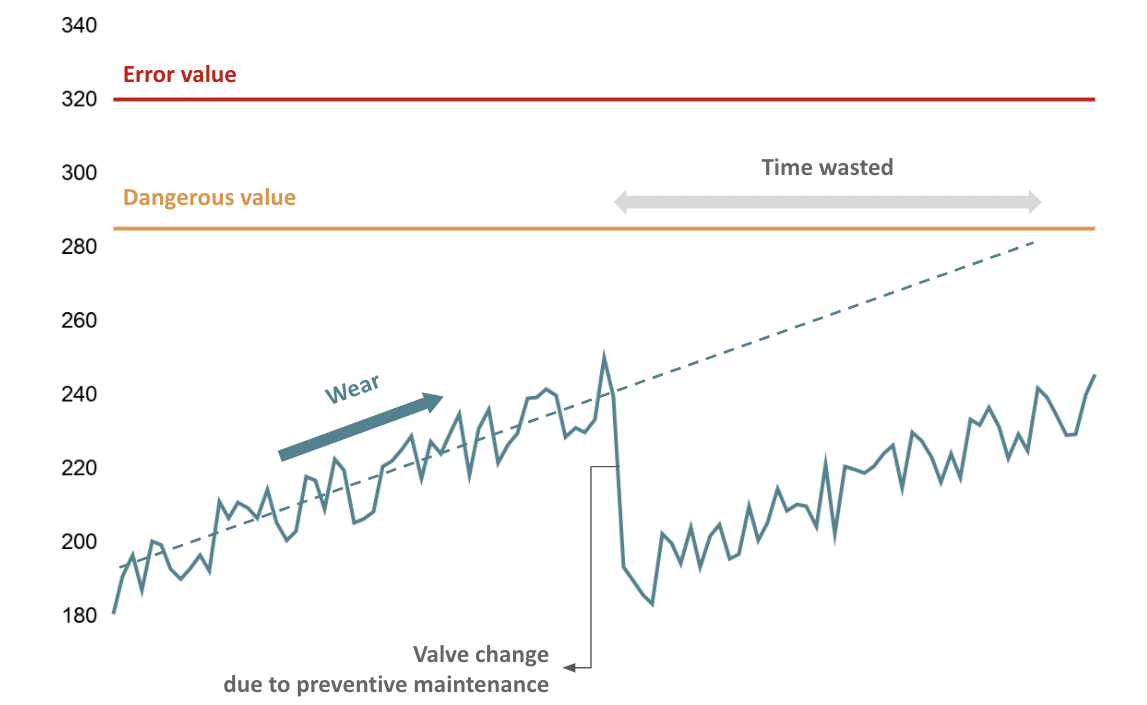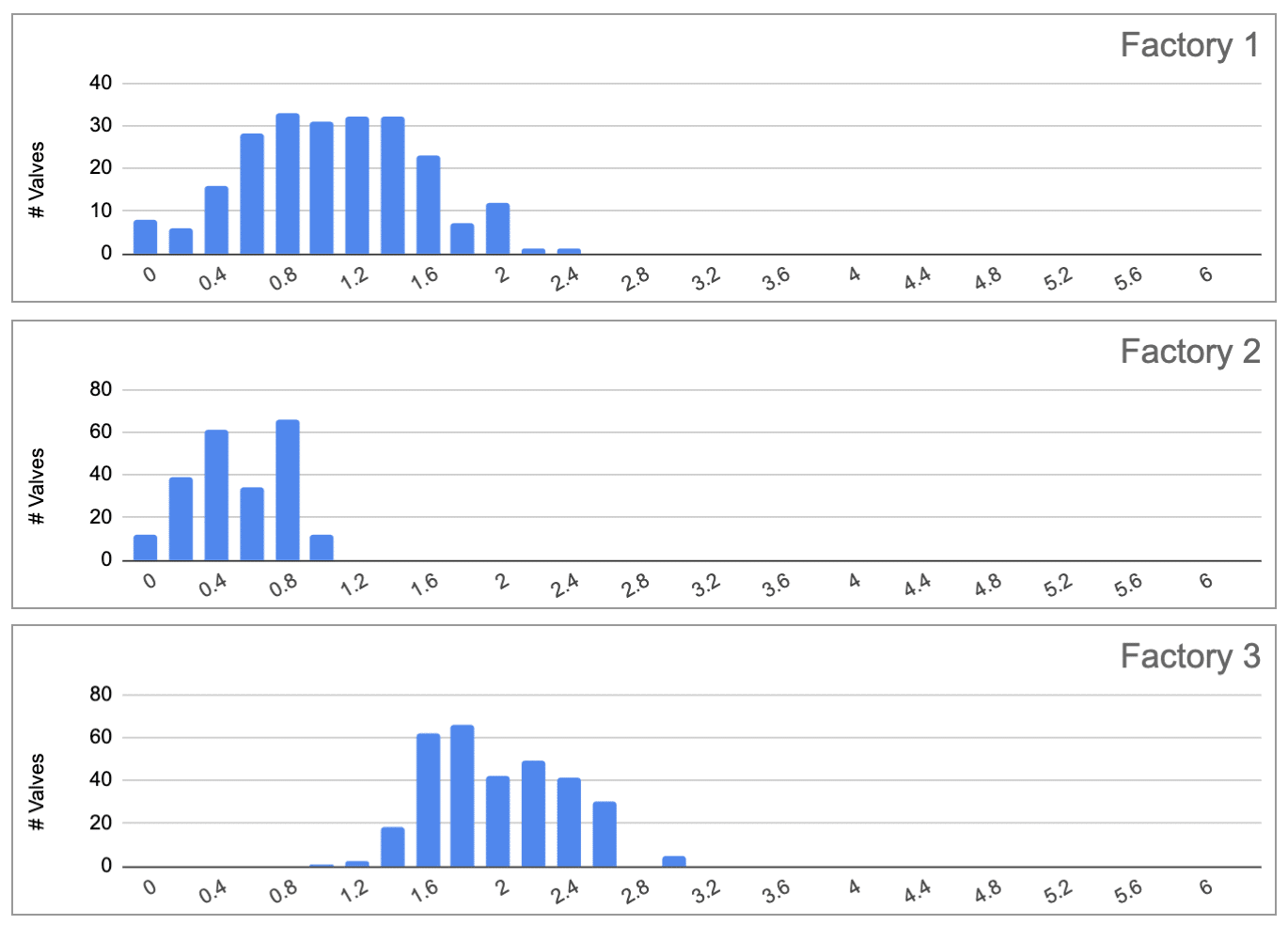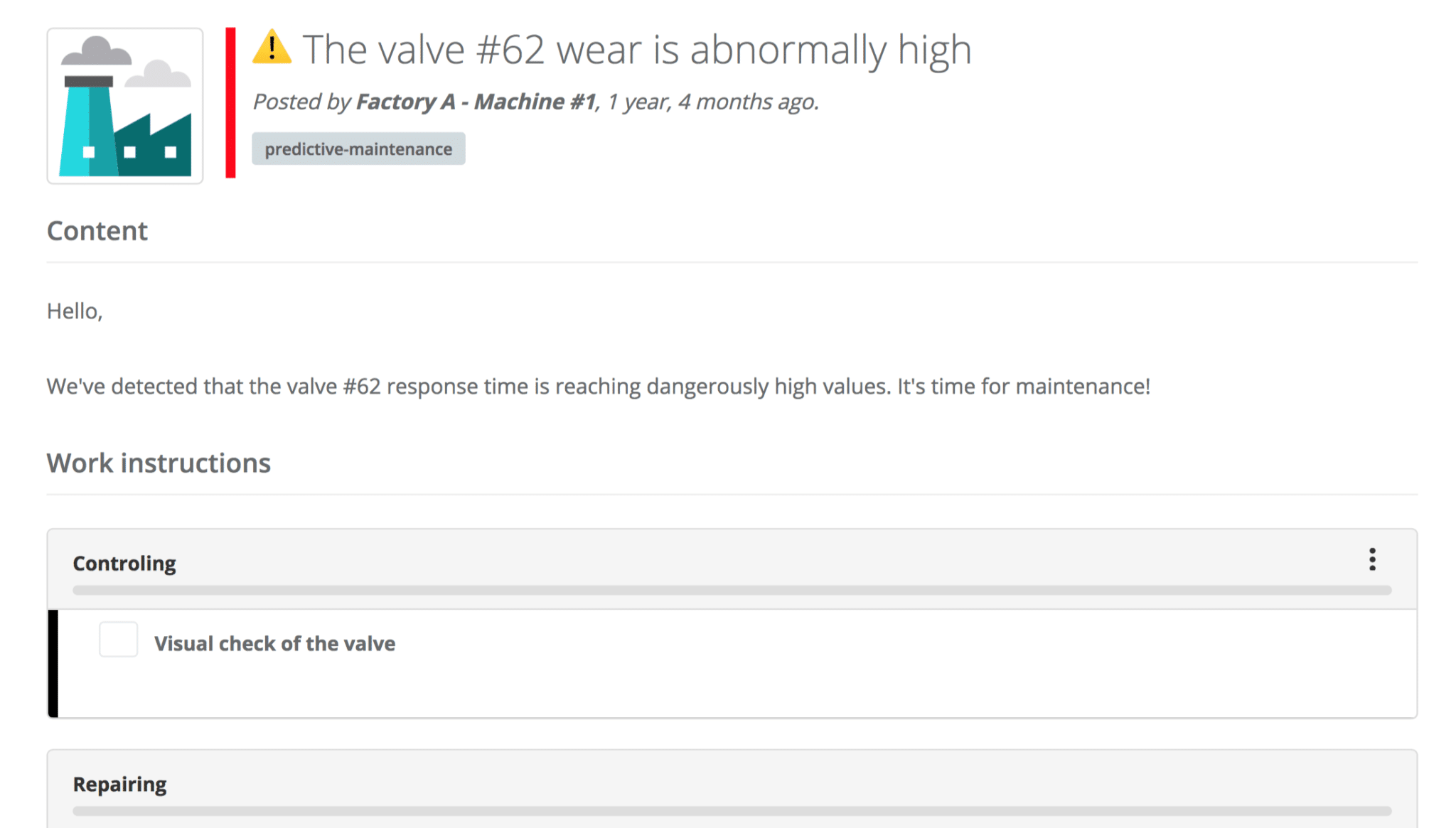

Guillaume Thomas - Technical Advisor
Predictive maintenance: an essential lever for increasing production lines uptime
The use of the Internet of Things (IoT) and artificial intelligence technologies is becoming increasingly common in the manufacturing industry. Predictive maintenance solutions help avoid unexpected production stoppages. The case of filling machines, which are prone to breakdowns, provides an illuminating example.
Filling machines are critical assets on the packaging lines of food & beverages manufacturers. Filling valves are an essential component of these machines. It is possible to find up to a hundred valves per filler, which wear out over time. Several factors are responsible for this: working speeds, environment (humidity, temperature) and types of production (water, chemicals, viscosity, etc.).
Wear is characterized by a minor increase in valve opening time, which is around 200 milliseconds. The result is a decrease in machine speed or a lack of precision (over- or under-dosing of the product). Valve opening time is a key variable, symptomatic of progressive wear and tear. Being able to monitor the deviation of this variable over the long term is a major source of information for understanding the behaviour of the valves and managing assets efficiently.
Faced with such risks, the maintenance management of filling valves needs to be optimised. It is often limited to the preventive maintenance recommendations provided by machine manufacturers, generally advocating an annual replacement of all the valves of a machine. This operation, in addition to being costly, requires a complete shutdown of the production lines for up to 3 days.
In addition, premature valve wear can lead to unexpected production downtime or equipment failure. In both cases, significant productivity reduction is to be expected. In this context, the implementation of a predictive maintenance approach proves to be an effective lever to extend the service life of the filling valves beyond one year but also to anticipate their failures.

Average filling valves opening time evolution
The implementation of an industrial IoT platform offers a convincing technological response to these types of problems. It is based on the one hand on the real-time collection of production data from intelligent sensors accessible from a PLC or supervision. On the other hand, specific algorithms make it possible to detect the precise moment when the deviation of the valve opening time exceeds the pre-failure alert thresholds. Thanks to these predictive analytics models, a complete transformation of traditional maintenance strategy can be implemented to increase productivity.
To achieve this, a large data set is recommended. In this case, we have three years of historical data from three factories with several filling machines equipped with 72 to 108 sensor-equipped valves per machine. An advanced analysis solution can be developed from the data obtained from the filling machines.
This process takes place in three steps. First, the typical wear behaviour of each valve is estimated by analysing the data using a piecewise linear regression model. In a second step, the behaviour of the valves is evaluated globally. The results from the first step are aggregated by machine and factory to determine whether or not specific behaviours exist. Is there a predictive model per valve? per machine? or per factory?
The last step consists of drawing detailed lessons from these results, which can be applied in a concrete manner.
Two observations should be made here:

Distribution of average valve opening time per factory
Once the analysis has been carried out, true predictive maintenance strategy can be implemented to avoid unexpected production stoppages. The knowledge acquired of the behaviour of the valves enables the control and early detection of valve wear, 7 days in advance.
This time frame is sufficient to allow teams of technicians to complete replacement or inspection of defective parts without impacting production. Companies benefit directly by improving equipment availability and the Overall Equipment Efficiency rate (OEE). In each factory, a specific maintenance plan can be set up according to the actual wear and tear of the valves, leading to important maintenance costs reduction as valves purchases will be halved as a minimum.

Example of prediction alert triggered 7 days ahead of failure
Related News
